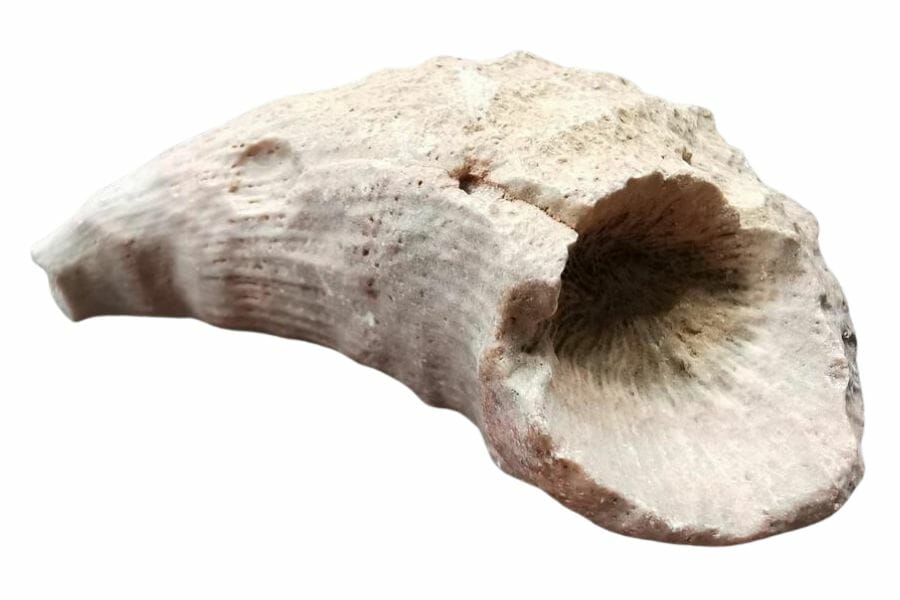Minnesota’s landscape is a vibrant tapestry, each element weaving tales of the Earth’s past. Each footprint on this land could lead to an encounter with fossils like trilobites or brachiopods.
While these are more commonly found, there are also valuable rare Minnesota fossils waiting to be uncovered. Some terrains, especially limestone and shale areas, are more promising for fossil finds. But the thrill of discovery is everywhere!
So, with a bit of patience and a keen eye, anyone can uncover the fascinating history of Minnesota through its fossils.
The Fossils Of Minnesota You Can Find
The fossils of Minnesota tell exciting stories about creatures and plants from long ago. From trilobites to brachiopods, each fossil has its own unique story to tell.
Exploring Minnesota’s terrain offers exciting opportunities to uncover these hidden tales.
While on the hunt for fossils, there’s even more to see. For those interested in broadening their exploration, our guide to rockhounding in Minnesota is a perfect resource.
It introduces readers to amazing rocks, minerals, and gems scattered throughout the state.
- The extensive local experience and understanding of our team
- Input from multiple local fossil hunters and fossil groups
- The accessibility of the various locations
- Safety and potential hazards when collecting
- Private and public locations
- A desire to include locations for both experienced fossil lovers and those who are just starting out
Using these weights we think we’ve put together the best list out there for those who love finding great new fossils for our collections!
Common Minnesota Fossils
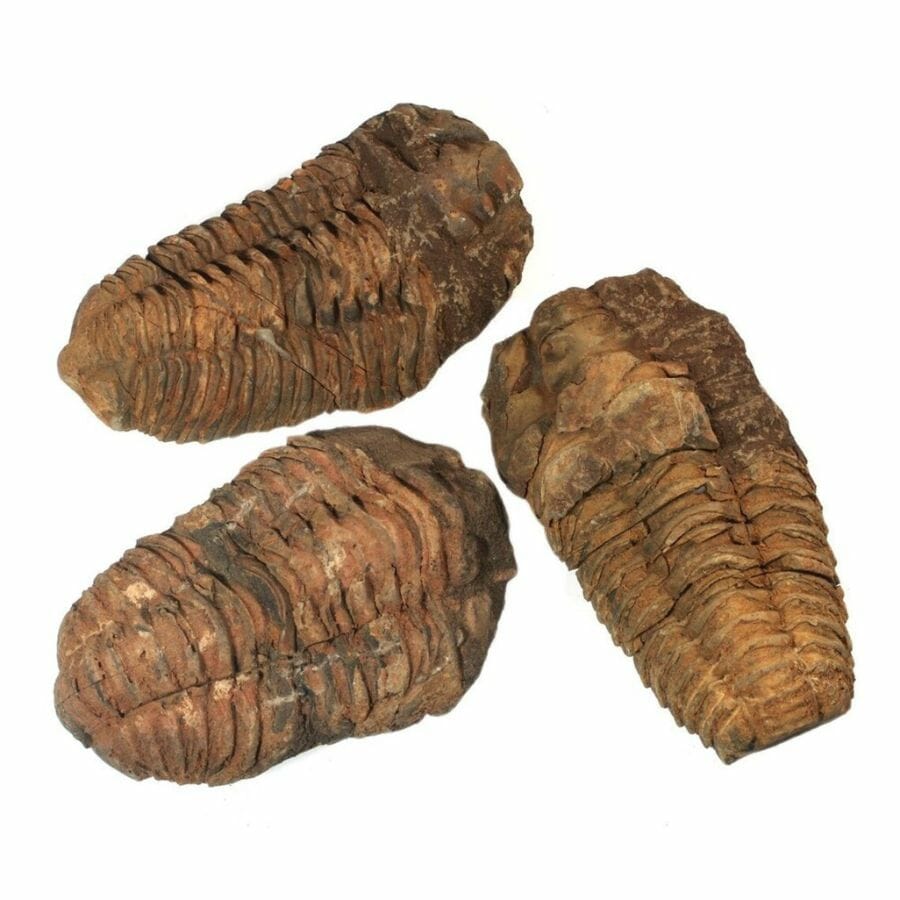
Here’s a list of some common fossils found throughout the state:
- Bivalves
- Bryozoans
- Stromatolites
- Crinoids
- Sponges
- Gastropods
- Conodonts
- Trilobites
- Corals
- Ostracods
- Brachiopods
- Cephalopods
- Plant fossils
- Trace fossils
Minnesota State Fossil – Castoroides ohioensis (Giant Beaver)
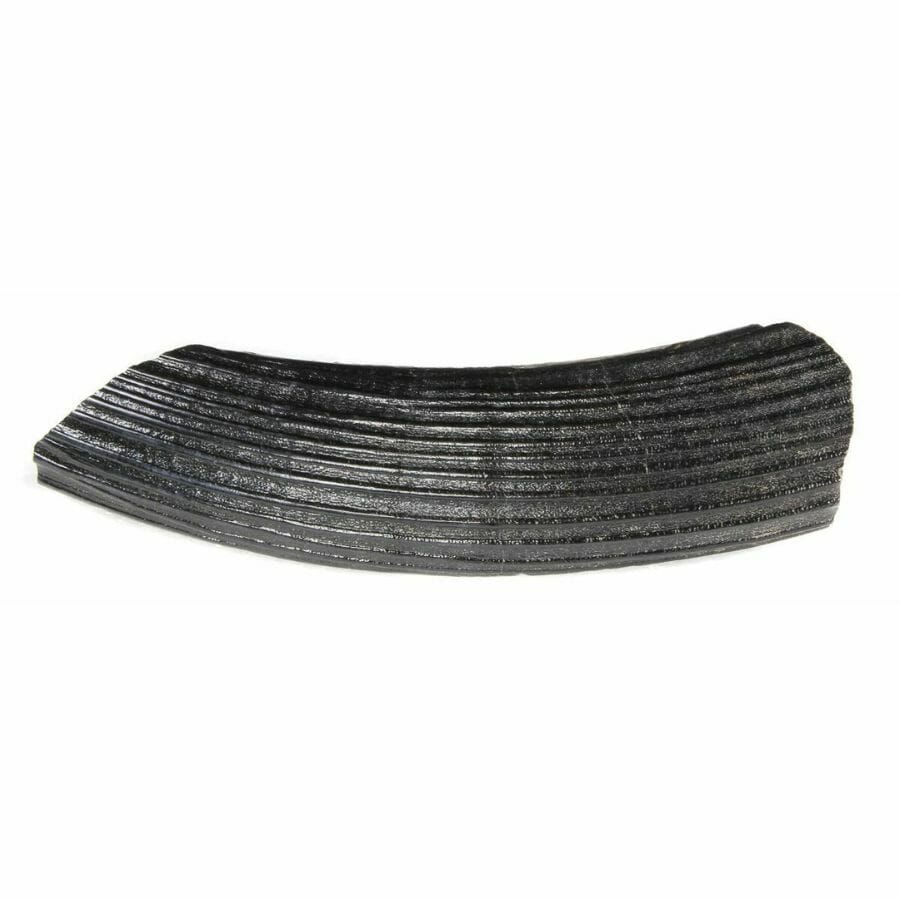
Castoroides ohioensis, commonly known as the Giant Beaver, is a prehistoric rodent that once roamed North America. It was much larger than the beavers we see today, with some adults measuring up to 8 feet long!
At this impressive size, giant beavers were almost as big as some modern-day bears.
Giant beavers lived during the Ice Age and are believed to have been herbivores, munching on plants. Unlike modern beavers, there’s no clear evidence that they built dams or lodges.
Over time, changing environments and other factors led to the Giant Beaver’s extinction.
Rare Minnesota Fossils
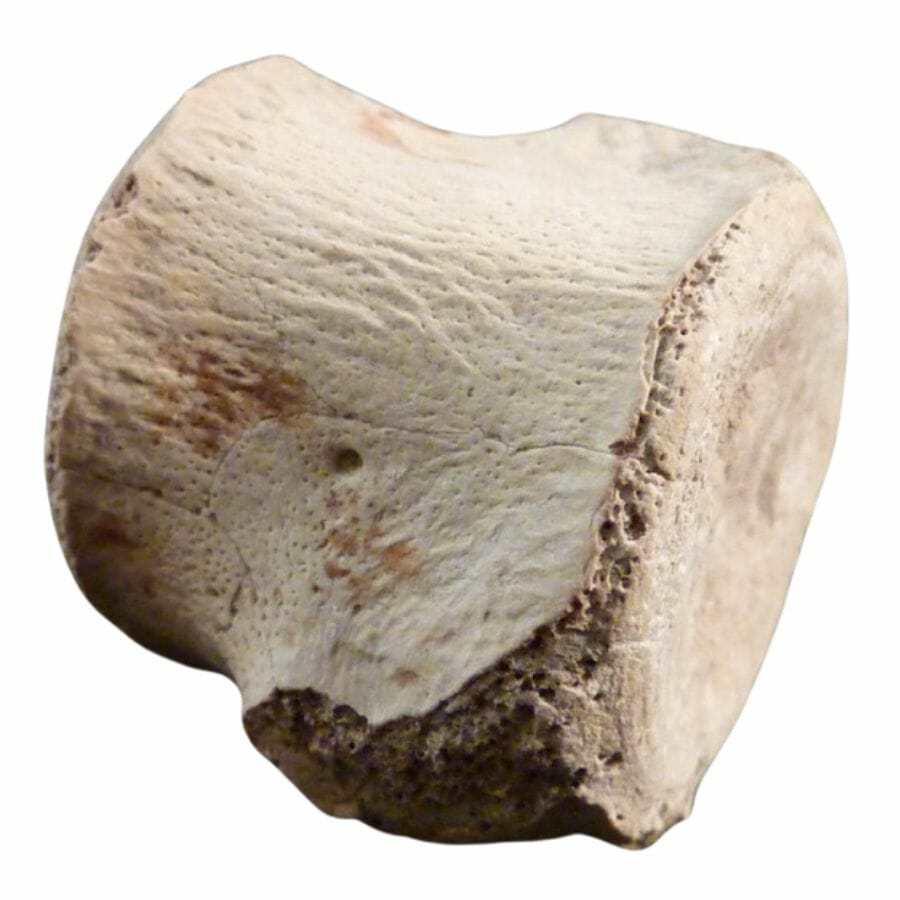
These are the valuable rare Minnesota fossils that you can find in the state:
- Dinosaur bones
The Best Places To Find Fossils In Minnesota
Every corner of the state offers potential for discoveries, from wooded areas to riverbeds. Let’s delve into some of the prime locations within Minnesota where these fossilized stories can be uncovered.
Always Confirm Access and Collection Rules!
Before heading out to any of the locations on our list you need to confirm access requirements and collection rules for both public and private locations directly with the location. We haven’t personally verified every location and the access requirements and collection rules often change without notice.
Many of the locations we mention will not allow collecting but are still great places for those who love to find beautiful rocks and minerals in the wild without keeping them. We also can’t guarantee you will find anything in these locations since they are constantly changing.
Always get updated information directly from the source ahead of time to ensure responsible rockhounding. If you want even more current options it’s always a good idea to contact local rock and mineral clubs and groups
Quarry Hill Nature Center
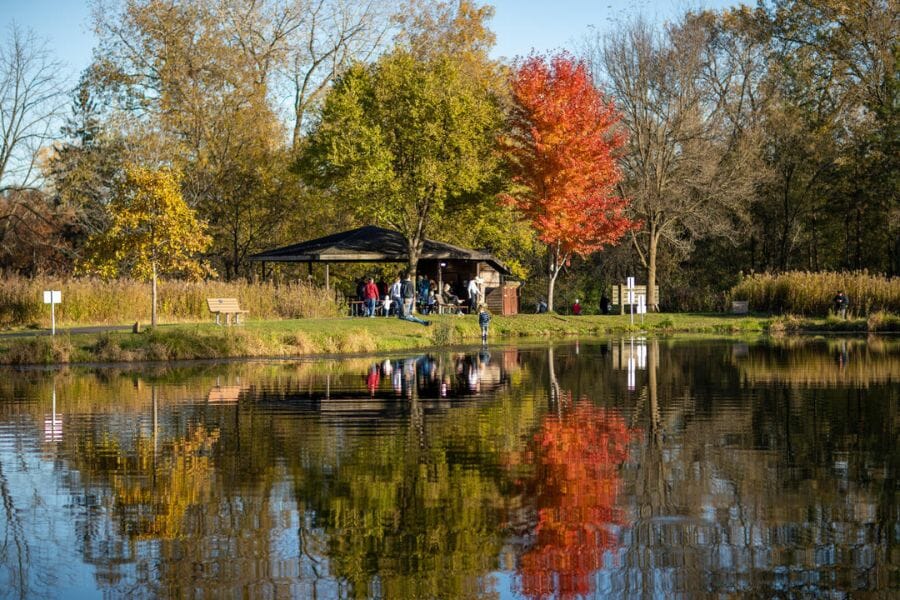
Quarry Hill Nature Center is a gem tucked away, showcasing an amazing blend of natural beauty and geological wonders. The center spans over 300 acres of lush terrain, featuring woodlands, ponds, and even a man-made limestone quarry.
The terrain is diverse, with trails weaving through forests and around water features, making it a scenic destination for nature lovers.
One of the standout features is the rich geology the site presents. The limestone quarry holds secrets from the past, and with a keen eye, you can uncover the fossils of Minnesota, revealing stories of creatures that once thrived in this region.
Quarry Hill Nature Center is accessible by road and offers ample parking for visitors. Whether you’re there to learn about the earth’s history, take a leisurely walk, or just enjoy the beauty of nature, this place is a must-visit spot.
Where to find fossils in Quarry Hill Nature Center
The limestone quarry is a treasure trove for fossil enthusiasts. Within this quarry, visitors often stumble upon trilobites, brachiopods, and crinoids.
The best spots to discover these fossils are along the exposed rock faces and the loose rocks scattered around the quarry’s floor.
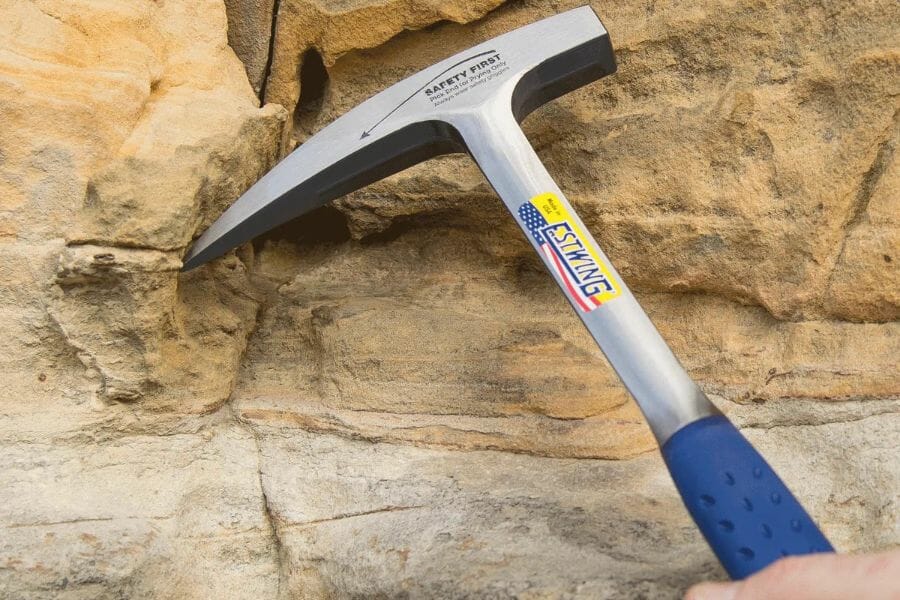
The tools every fossil hunter will need
When you're out looking for fossils having the right tools for the job is really going to make or break your success. You don't need a lot for most trips but there are a handful that are critical and will make your life a lot easier.
We get asked a lot about the equipment we use. Over the years we've found a handful of tools that we recommend to both new and experienced fossil hunters which we outline in great detail in our complete rockhounding tools and kit guide. These are quality options that also happen to be relatively inexpensive.
Below are the basic tools that make your life so much easier and save you a ton of time. Check out the full guide to see everything we recommend bringing. One quick note, as an Amazon Associate I earn from qualifying purchases but we try very hard to only recommend gear we would use ourselves and often recommend brands you can't find on Amazon.
At a minimum you should have:
1 - Sturdy rock hammer: The Estwing Rock Pick is our standard
2 - Rugged chisels: Try Kendo' 3-piece Chisel Set
3 - Compact shovel: The Koleiya 28-inch shovel works well
4 - Rock screen pan: The Wazakura Soil Sieve Set fits the bill
5 - Eye protection: DeWalt Safety Glasses are cheap and comfortable
6 - Head protection: Malta's Safety Helmet has been our go-to
7 - Jewelers lens with at least 20x magnification: Jarlink's Jewelers Loop is perfect
The fossil-finding books that we use most
There are also a few books that have been extremely helpful in the search for gems. These books have great recommendations and tips:
National Audubon Society Field Guide to Rocks and Minerals: North America
Northeast Treasure Hunter's Gem & Mineral Guide
Earth Treasures: The Northeastern Quadrant
We provide links to find these tools on Amazon but some can also be found at your local hardware stores. For more recommendations check out the link to our full tool guide above.
Shadow Falls Park
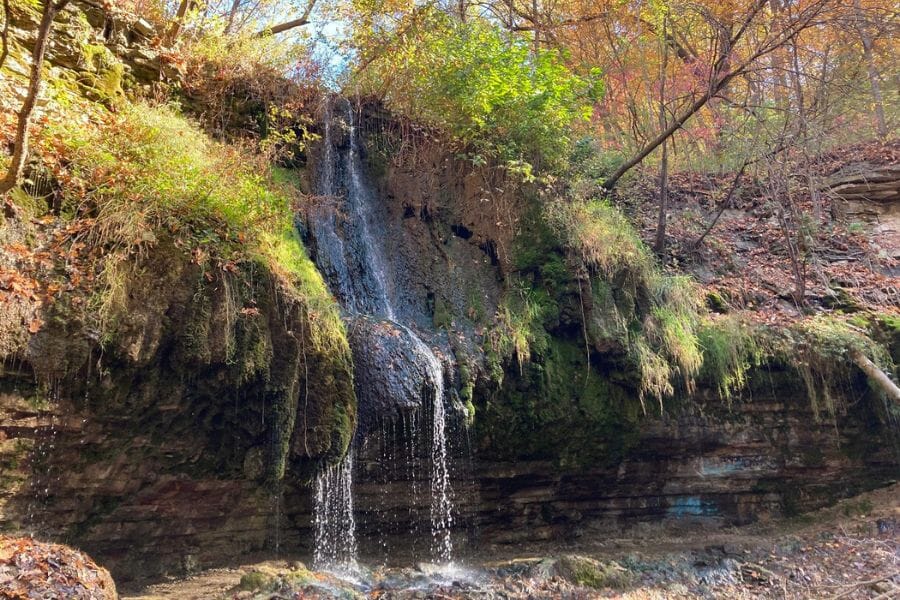
Shadow Falls Park is a unique outdoor destination that brings together nature and geology in an exciting way. The park is home to an array of geographic features like cliffs, waterfalls, and wooded areas.
This creates a terrain that’s both visually appealing and geologically rich.
Make sure to keep an eye out for the park’s limestone cliffs. These limestone formations are perfect for fossil hunting, and it’s not uncommon to discover fossils.
Those interested in expanding their fossil hunting in Minnesota would do well to consider this park. Along with fossils, the park offers an opportunity to observe different rock layers, giving visitors a hands-on lesson in geology.
Shadow Falls Park is easily accessible by road and offers parking for visitors, making it convenient for day trips or even just a quick excursion.
The paths are well-marked, and there’s a blend of easy and moderate trails, so visitors of all ages and experience levels can explore comfortably.
Where to find fossils in Shadow Falls Park
The limestone cliffs are a primary spot for fossil enthusiasts. Within these cliffs, visitors can uncover fossils like brachiopods and trilobites.
To have the best chance of spotting these fossils, you should focus on the exposed rock faces and the areas around the base of the cliffs.
Lilydale Regional Park
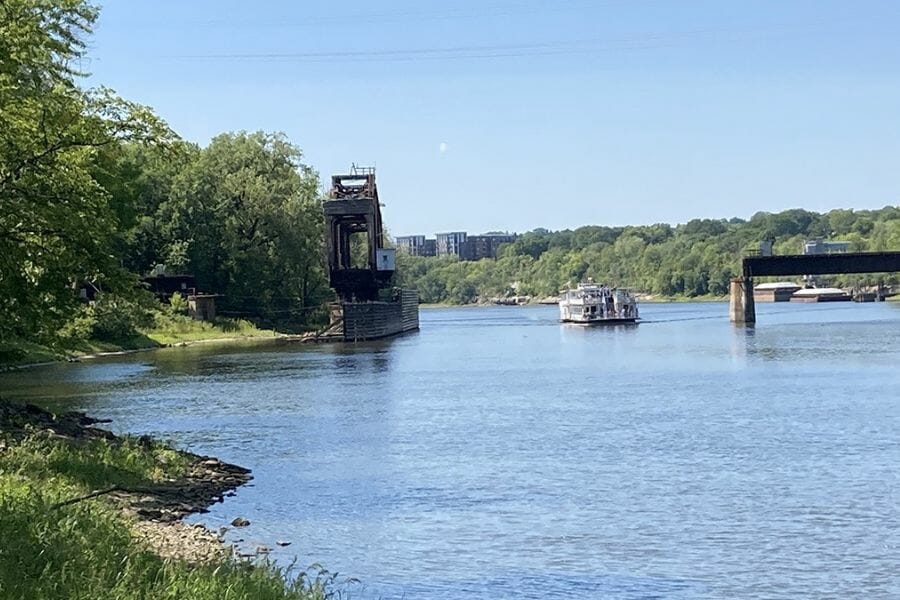
Lilydale Regional Park is a vast area filled with a mix of lush woodlands, rolling hills, and unique geological formations. The park’s terrain is especially intriguing due to the presence of exposed sedimentary rock layers, which hold clues to the past.
Among these layers, enthusiasts often discover evidence of marine life that once thrived in the area, making it a hotspot for those keen on uncovering fossils in Minnesota.
The park’s diverse geography offers a chance to explore both scenic beauty and geological wonders. You can find valleys, bluffs, and picturesque ponds while wandering its trails.
There are well-marked roads leading to Lilydale Regional Park and ample parking spaces for visitors.
Whether it’s a day of exploration, a desire to understand more about Earth’s history, or simply a walk through nature, this park offers an enriching experience for all who visit.
Where to find fossils in Lilydale Regional Park
Within the park’s exposed sedimentary rock layers, visitors often stumble upon fossils of marine creatures, such as brachiopods and crinoids. To maximize chances of discovery, focus on the park’s bluffs and valleys.
Mississippi River
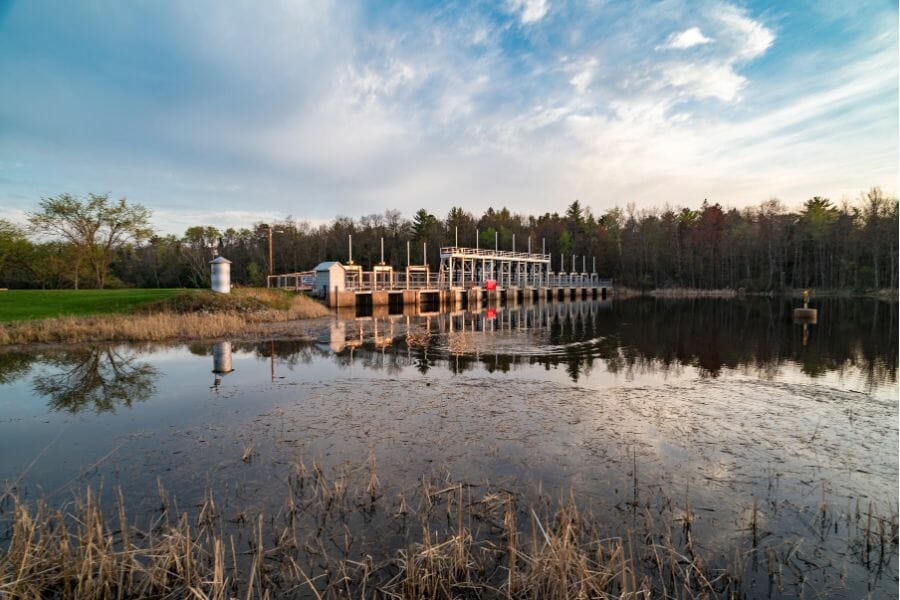
The Mississippi River is one of the longest rivers in the world, and its journey winds through a diverse range of landscapes. In one specific region, it meanders through lush woodlands, picturesque bluffs, and rolling valleys.
This segment of the river showcases unique geological features, with exposed rock layers on the riverbanks revealing the area’s rich geological history.
These rock formations offer enthusiasts a glimpse into the past, hinting at the various environmental changes the region has undergone.
The terrain surrounding the river is varied. Dense forests are punctuated by open areas and wetlands, providing habitats for a plethora of wildlife. For those keen on exploring the river’s geology, the bluffs and valleys present the best opportunities.
Numerous parks and recreational areas dot the Mississippi River’s banks, each equipped with parking and viewing areas.
Where to find fossils in Mississippi River
The Mississippi River’s banks and surrounding areas in a certain region are home to sedimentary rock layers that hold fossilis.
Within these layers, enthusiasts can uncover fossils of marine creatures and plants that once thrived when the region was underwater.
Bluffs and valleys adjacent to the river, where erosion has exposed deeper layers, are prime spots for these discoveries. While exploring, it’s common to encounter fossils like brachiopods, gastropods, and trilobites.
Hill Annex Mine State Park
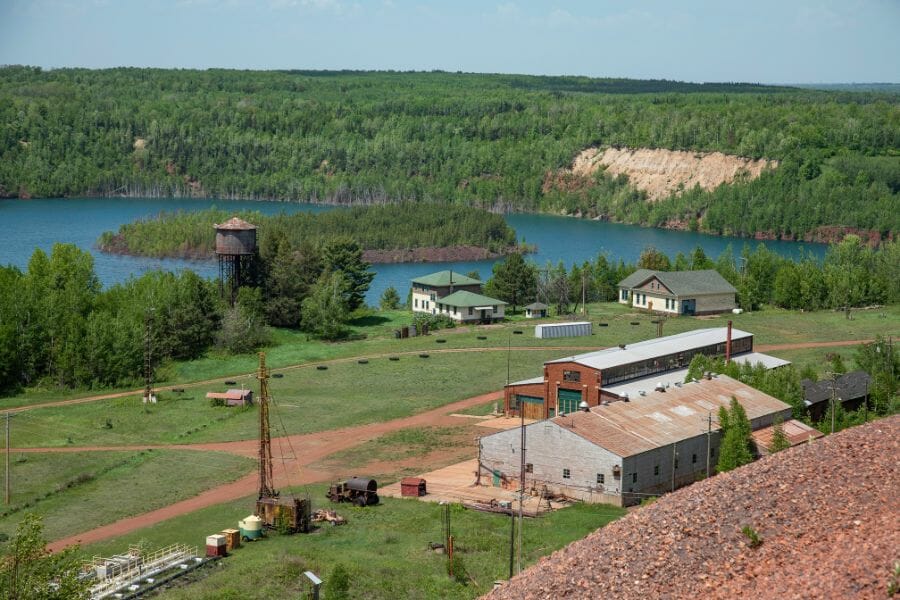
Hill Annex Mine State Park captures the essence of both nature and industry. It once bustled as an active iron mine and now stands as a testament to the area’s rich mining history.
The park showcases a varied terrain with open pit mines, forested areas, and remnants of mining operations.
Geologically, the area offers insights into the rich iron deposits that played a significant role in industry for decades. These iron formations paint a picture of the region’s past geological conditions and processes.
Visitors have the opportunity to explore this unique blend of natural beauty and historical significance through guided tours. These tours dive deep into the mining history, the geology of the region, and even offer opportunities to hunt for fossils.
Hill Annex Mine State Park is well-connected by main roads and offers ample parking spaces for visitors.
Where to find fossils in Hill Annex Mine State Park
Among the layers of rock in the park, you can discover fossils of plants and animals that once thrived in the area. The open pit mines and exposed rock faces are prime spots for these discoveries.
It’s common to find fossils like shark teeth and different plant impressions, offering a glimpse into the region’s ecological past.
Other Top Places To Find Minnesota Fossils By Region
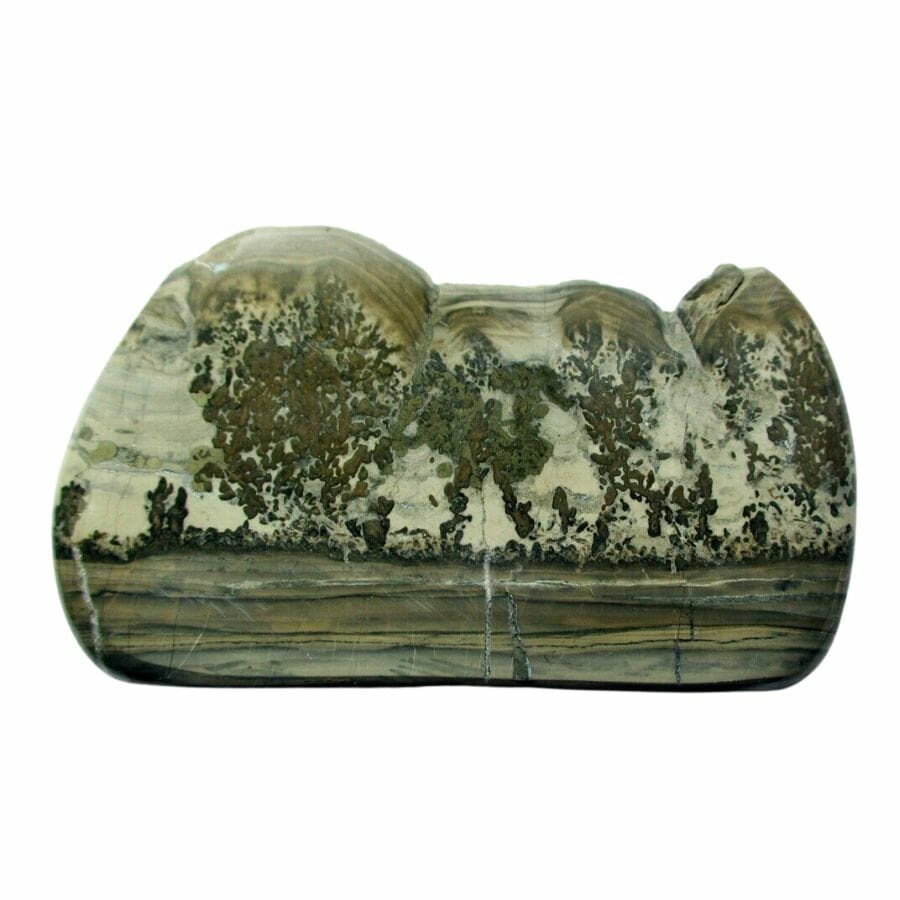
Exploring certain areas in the state can lead to exciting discoveries. Here areas in Minnesota where you can start your fossil-hunting adventure:
| Location | Fossils |
| Brown County clay pits | Shark teeth, plant fossils, cephalopods, gastropods, pelecypods |
| Franconia, Chisago County | Dicellomus |
| Taylor’s Falls, Chisago County | Trilobites, brachiopods |
| Burnsville, Dakota County | Crinoids, brachiopods |
| South St Paul, Dakota County | Ctenodonta, Cyrtodonta, Modiolopsis, Holopea, Ophileta, Platyceras, Pleurotomaria, Orthoceras |
| Chatfield, Fillmore County | Crepipora, Lingula, trilobites |
| Forestville, Fillmore County | Receptaculites, Strophomena, Graptolites, Orthis, Orthonota |
| Fountain, Fillmore County | Cryptozoon, corals, bryozoa, mollusks, cephalopods, crinoid fragments |
| Granger, Fillmore County | Bryozoa, brachiopods, trilobites, cephalopods |
| Lime City, Fillmore County | Murchisonia, Maclurea, Strophomena, Endoceras, corals |
| Mantorville, Fillmore County | Schizotreta |
| Spring Valley, Fillmore County | Lingula, Orthis, Lynx, Strophomena, Leptaena, Chaetetes, crinoid fragments, Homotrypella |
| Wykoff, Fillmore County | Ambonychia, trilobites, Orthoceras |
| Cannon Falls, Goodhue County | Sponges, corals, brachiopods, trilobites, bryozoa, mollusks, cephalopods, Belemnocystids |
| Hader, Goodhue County | Diplotrypa, Plectambonites, Pleurocystites, Fusispira, Lingula, trilobites, brachiopods |
| Oxford Mills, Goodhue County | Phylloporina, Lingula, brachiopods, trilobites, cephalopods |
| Minneapolis, Hennepin County | Arthroclema, Lingula, Raufella, Vinella, Stromatopora, Lichenaria |
| St Anthony Falls, Hennepin County | Gastropod Trochonema, bryozoa, brachiopods, cephalopods, trilobites, Strophomena, Orthis, Murchisonia, Leperditia, Cypricardites, Bucania |
| Reno, Houston County | Brachiopods, Dikelocephalus, Prosaukia, Conaspis, Ptychaspis |
| Spring Grove, Houston County | Brachiopods, cephalopods |
| Calumet, Itasca County | Mollusks, arthropods, shark teeth, Icthyosaurus, Plesiosaurus, conifer needles, wood, Teredolites |
| Grand Rapids, Itasca County | Abundant Exogyra preserved as limonite casts |
| Itasca, Itasca County | Exogyra, Anchura, corals, seeds, leaf impressions |
| Kasota, Le Sueur County | Ophileta, Dirhachopea, Pelagiella, pelecypods, Ctenodontidae |
| Chatfield, Olmsted County | Brachiopods, gastropods, Chaetetes, trilobites, crinoids |
| Rochester, Olmsted County | Strophomena |
| Stewartville, Olmsted County | Hormotoma, Maclurina, Westonoceras |
| Pipestone National Monument, Pipestone County | Lingula, Paradoxides |
| St Paul, Ramsey County | Rhynchotrema, Rhinidictya, Raufella, Lichenaria, Vinella, Stromatopora, Receptaculites, Streptelasma, Aulopora, Tetradium, Batostoma, Homotrypa, Prasopora, Stictoporella, Dalmanella, Rafinesquina, Lingula, Pionodema, Ctenodonta, Raufella, Stictoporella, Edrioasteroids Foerstediscus |
| Hawk Creek Township, Renville County | Sphaerium, Valvata, Amnicola, Gyraulus, Goniobasis |
| Biwabwik, St Louis County | Stromatolites |
| Stillwater, Washington County | Dikelocephalus |
| Dresbach, Winona County | Trilobites Acheilus, Crepicephalus, Obolus, Lingulepsis, Lingula, cephalopods |
| Fremont, Winona County | Brachiopods, trilobites |
| Minnesota City, Winona County | Mastodon |
| St Charles, Winona County | Bryozoa, brachiopods, cephalopods, trilobites |
| Winona, Winona County | Linguella, Acheilus |
Common Questions About Fossil Hunting In Minnesota
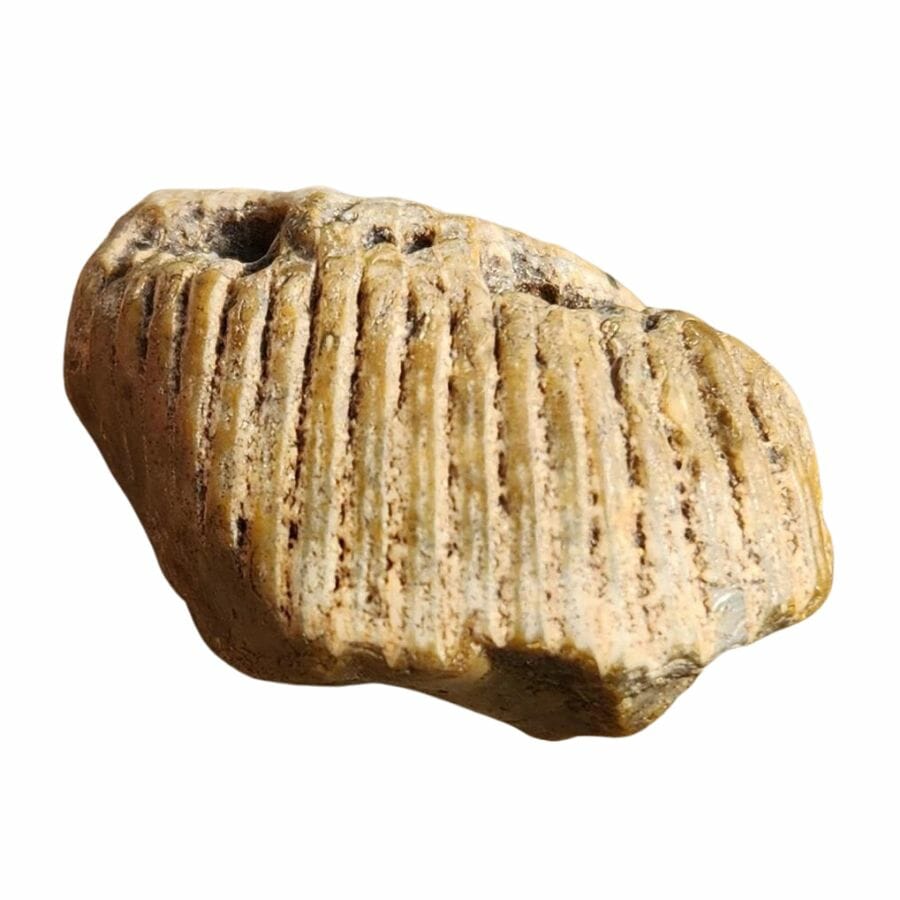
From understanding the types of fossils present to knowing where to find them, the enthusiasm around this subject is clear. Dive into some of the most common questions that people ask about fossils.
Can you find megalodon teeth or shark teeth in Minnesota?
Finding megalodon teeth in Minnesota is unlikely. The megalodon, a massive prehistoric shark, lived in oceans that didn’t cover this region.
However, Minnesota was once submerged under a shallow sea during different periods in its history. Because of this, you can find fossils of marine creatures, but they’re mainly from species that lived in those specific seas.
Shark teeth, particularly from smaller species, have been found among common Minnesota fossils, but they are not as widespread or as large as megalodon teeth.
Is it illegal to collect fossils in Minnesota?
In Minnesota, collecting fossils on private property is allowed with the permission of the landowner.
However, it’s essential to remember that collecting fossils on state-owned lands, including state parks, scientific and natural areas, and wildlife management areas, is prohibited without a permit.
If you want to search for fossils in public lands, make sure to consult the Minnesota Department of Natural Resources beforehand.
These rules are in place to protect and preserve the state’s rich geological history and ensure that everyone can enjoy and learn from these natural wonders.
If you are passionate about fossil hunting, it’s crucial to research the area you plan to visit and ensure that you have the necessary permissions.
Can you find dinosaur bones in Minnesota?
The chances of finding dinosaur bones in Minnesota are slim, though some have been found before. The rocks in Minnesota from the time of the dinosaurs, which is the Mesozoic Era, are buried deep beneath the surface and are not exposed.
Most fossils found in the state are from much older or much more recent time periods.
How do you identify the fossils that you find?
Identifying fossils can be an exciting part of the discovery process. When you come across fossils in Minnesota or anywhere else, start by observing the shape, size, and texture of the specimen.
Often, these physical characteristics can offer clues about what the fossil might be. Using a field guide specific to the region’s fossils can be a handy tool.
These guides provide images and descriptions that can help match the fossil in hand with known specimens.
Taking clear photos and comparing them to pictures in books or trusted online resources is another method.
If uncertain, sharing the find with a local geology or paleontology group can also be beneficial, as members can often provide insights based on their experiences.
Lastly, visiting museums or educational centers with fossil displays can give hands-on opportunities to learn and make comparisons. With time and practice, identifying different fossils becomes a more familiar and rewarding process.
Our Favorite Places To Buy Fossils In Minnesota
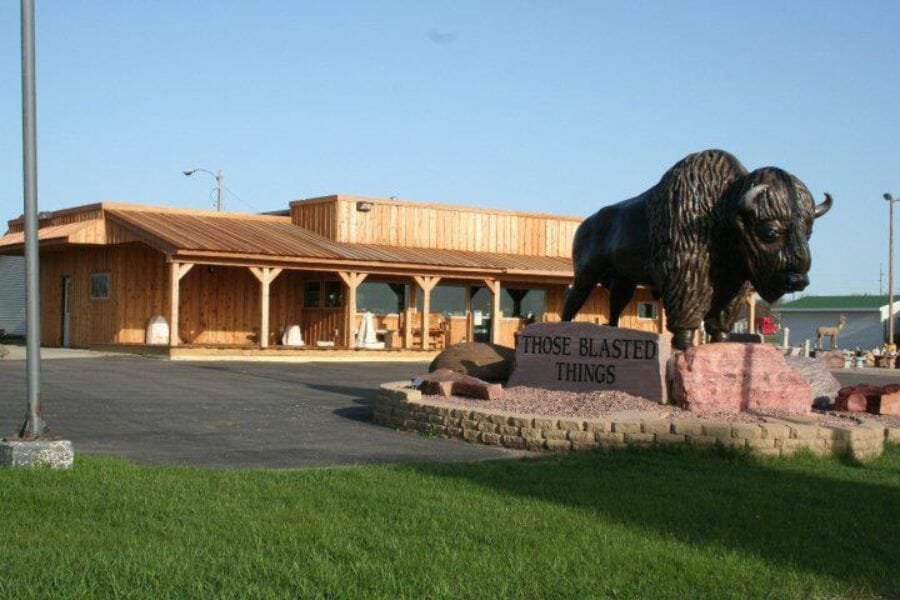
There are numerous spots where enthusiasts can purchase fossils of various kinds. Here’s a list of top places in the state to buy your very own fossil.
- ZRS Fossils & Gifts – 3018 Lyndale Ave S, Minneapolis, MN 55408
- Enchanted Rock Garden – 1228 E 66th St, Richfield, MN 55423
- Those Blasted Things – 924 S Kniss Ave, Luverne, MN 56156
- Rocks & Tools SeashellsbyShelly Rock and Crystal Shop – 2625 County Rd 37 NE, Monticello, MN 55362
- Get Pickin LLC – 3749 Hwy 33 N, Cloquet, MN 55720

